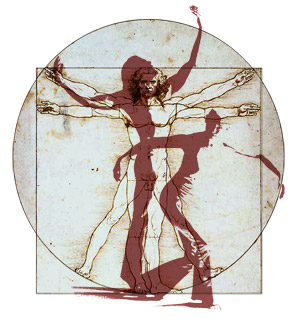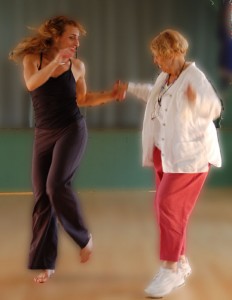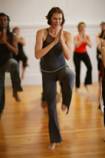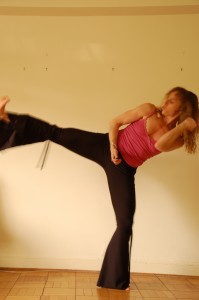 The first thing that Nia students learn is a heel-lead step. The body was designed to step heel first.
The first thing that Nia students learn is a heel-lead step. The body was designed to step heel first.
If you look at the skeleton of the foot, you will see that the structure suggests which part would be most likely to bear a strike and weight, and which part would be suited to providing a greater surface area to help with balance.
Try this: Take some careful steps; one foot after the other. Just notice how you step. Then, become super conscious about leading each step with your heel. Your steps should repeat this: Heel, whole foot, and then push off the ball of the back foot. Right foot: heel, put the rest of your foot down, left heel rises, you push through to the ball of the left foot, and so on.
The second lesson in Nia choreography is the clock. The easiest way for students to move the same way all together is to have them stand on an imaginary clock face. Standing feet together, twelve o’clock is straight in front of you and six o’clock is straight behind. The rest of the numbers on the clock fall where they normally do between twelve and six, no matter where you are in the room. Read More→
 Nia Technique routines are always choreographed with a focus in mind.
Nia Technique routines are always choreographed with a focus in mind. Driving back from New Jersey, where I spent Passover, I noticed that my neck felt tight.
Driving back from New Jersey, where I spent Passover, I noticed that my neck felt tight. I had a pulled muscle in my left calf. I was unsure if I could dance on it, but rather than skip the classwork, I decided to explore the healing possibilities that Nia offers.
I had a pulled muscle in my left calf. I was unsure if I could dance on it, but rather than skip the classwork, I decided to explore the healing possibilities that Nia offers. I had another request to teach Girls’ Night Out and because there was a visitor, I decided to just go ahead and do it. I had planned to do DreamWalker and to focus on the Martial Arts energies. I kept the focus, but applied it to GNO.
I had another request to teach Girls’ Night Out and because there was a visitor, I decided to just go ahead and do it. I had planned to do DreamWalker and to focus on the Martial Arts energies. I kept the focus, but applied it to GNO.